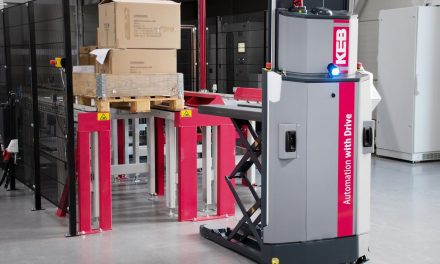Jacques Adriaansen, ?co-founder of Every Angle, explains the problems that can arise from failure to keep an up-to-date inventory.
As any retailer dependent on a fluid and efficient supply chain will tell you, it’s important to, as the saying goes, ‘keep stock’ of your situation. Shortages of stock at vital moments can place a massive strain on your existing logistics processes if you suddenly find out, for example, that you are in short supply of a certain product that is in high demand. With this in mind, it’s even more baffling to consider why so many organisations have adopted a ‘Thou shalt not keep inventories’ philosophy.
This approach is, of course, absolute nonsense and it’s clear that keeping an inventory has a well-defined, and tangible function. And yet, we’re still seeing many organisations paying insufficient attention to this simple aspect of business, resulting in stock limitations and capital destruction instead of cost savings. Of course, it is essential to continually analyse and optimise your inventory management, but simply claiming that lower inventories are positive is, in itself, a deeply flawed premise. Keeping an inventory should always have a purpose, whether the aim is to guarantee short or managed delivery times to the customer placing the order, or to secure savings through bulk purchases. Beware, keeping inventory without a properly defined purpose might well be wrong or even stupid.
I once found the best example of how cutting inventories can work against you when speaking to a producer of trucks. He told me proudly that his company had a maximum stock of bumpers for two hours, something that effectively limited the storage costs. In answer to my question of whether bumpers were on occasion delivered too late, I was told that the production line went down for half an hour once or twice a week as a result of late delivery. This is, of course, a considerable cost if you think that 80 vehicles roll off the production line every day, and that these trucks could not be assembled if the front bumper was not available. In response to my remark, “Then I would keep a safety stock for an hour to absorb the uncertainty”, I received the short, simple answer: “That is not done in the automotive industry.”
This example, and many others like it, demonstrate that the ‘just in time’ principle has been adopted much too dogmatically by far too many industries and organisations. Businesses shouldn’t ask whether they should keep stock, but rather how much stock they should keep in order to find the correct balance between optimal business management and cost efficiency. Maintaining the correct stock volumes not only ensures that you can supply your customers quickly, but also has the aim of guarding against uncertainty.
By building up ‘safety stocks’ you can prevent downtime in your production process. You should also consider absorbing differences between your consumption and your supplier’s delivery conditions and deadlines. For instance, if you know that you use ten items per day of a certain product and that a fresh delivery takes five days, you should, in any event, have sufficient items in stock to be able to continue producing until the following delivery from your supplier. In practice, organisations often deal in an amateurish way when setting the level of their safety stock. For example, it’s common to see safety stock parameters raised in the ERP immediately after a supply difficulty arises, that are then not cut back once the problem has been solved.
So how then do you determine how much stock you have to maintain, how large the safety margin is that you have to build in, and what the ideal time for ordering is? The answer is easy: combine and analyse the data from the various operational processes. Advanced ERP systems like SAP allow you to gain insight into available stocks, orders placed, production scheduling, average demand, order history and agreements with suppliers, without reproducing the entire picture.
It is, of course, still necessary to link these factors to arrive at thorough analyses, and on the basis of them to be able to think ahead and to act in good time. As this data is stored in different modules – such as Order-to-Cash, Procure-to-Pay and production scheduling – within the ERP system, it is difficult to extract these analyses from the system in a structured way. The aim thus is to deploy tools that break down the barriers between these modules and create a holistic picture on the basis of which inventory management can genuinely be optimised. Less is more really does not apply to inventory management, and unless you are prepared to take a ‘safety first’ approach, the consequences could be dire!



